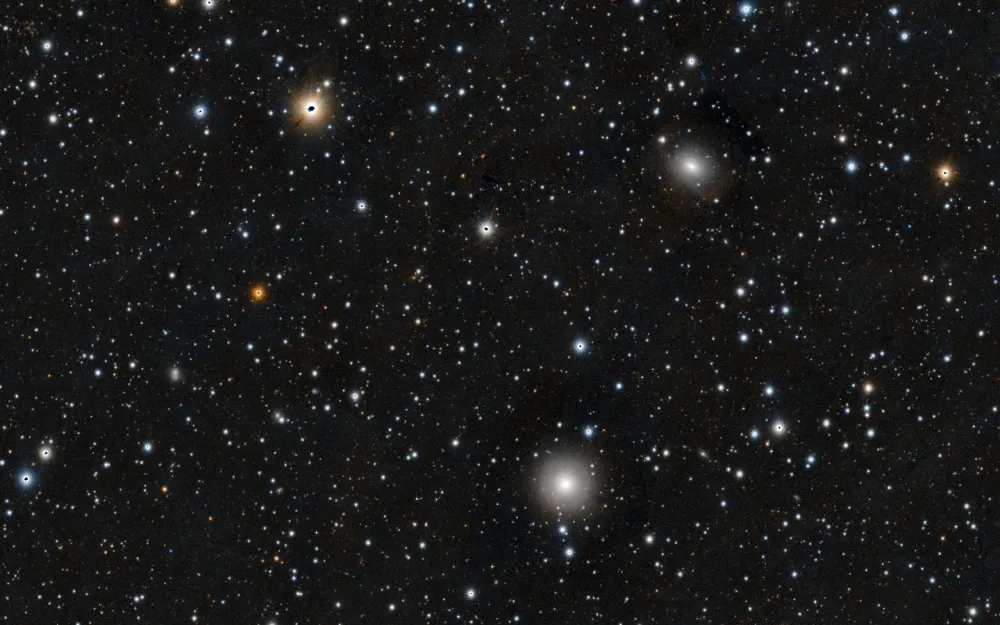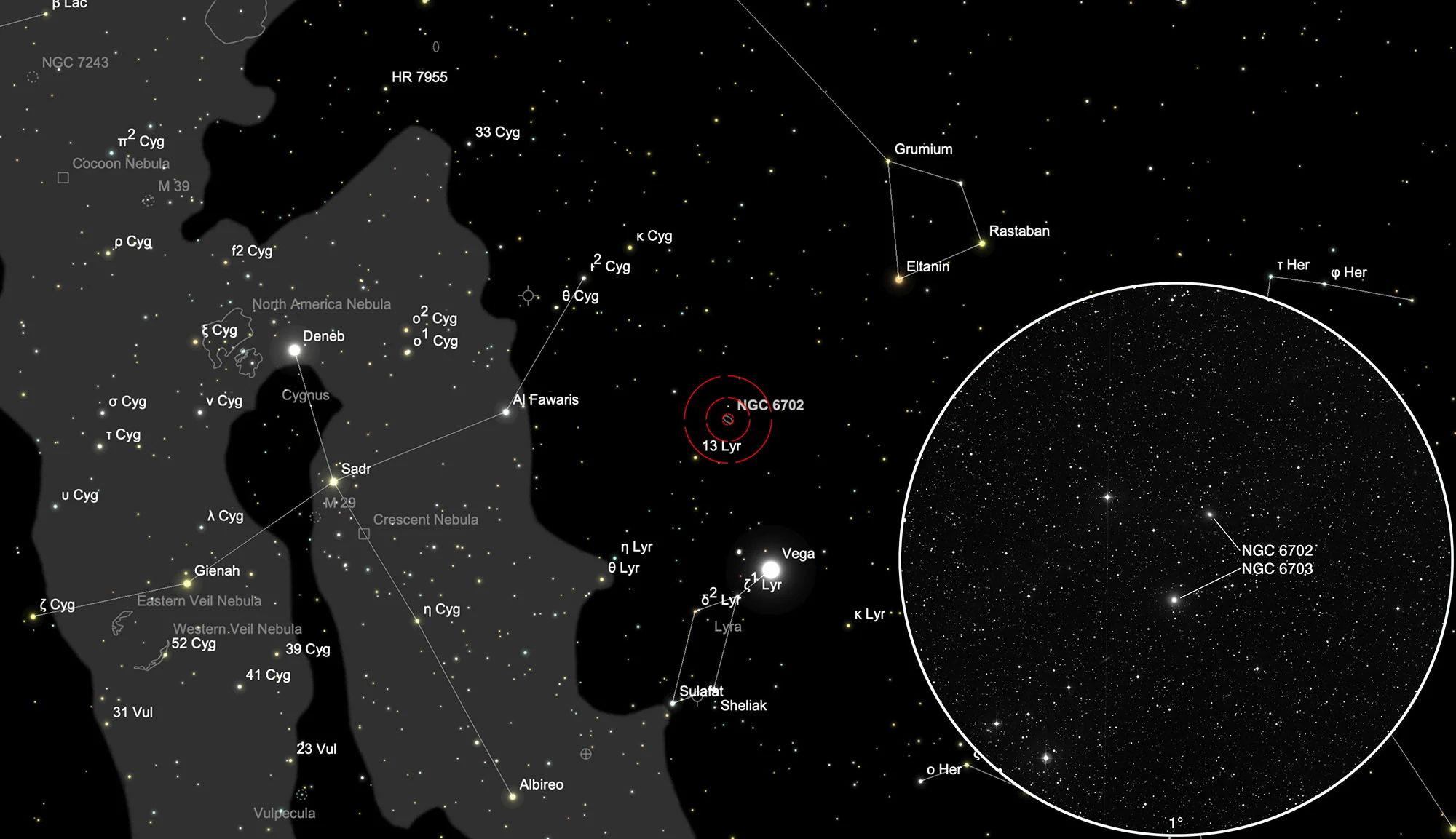Galaxies NGC 6702, NGC 6703

Object Description
The small elliptical galaxy NGC 6702 is moving away from the Local Group at a speed of about 5000 km/s. The inclination of the axis of rotation, as far as one can speak of it at all for an elliptical galaxy, is 55 degrees.
The spiral galaxy NGC 6703 is significantly closer than NGC 6702, as its radial velocity with respect to the Local Group is about 2500 km/s. We are looking quite perpendicular to the galaxy disk. Our line of sight and the axis of rotation of the galaxy differ by 21 degrees.
| Name | RA | Dec | Type | bMag | vMag | B-V | SB | Dim | PA | z | D(z) | MD | Dreyer Description | Identification, Remarks |
|---|---|---|---|---|---|---|---|---|---|---|---|---|---|---|
| NGC 6702 | 18 46 57.6 | +45 42 22 | Gx (E2) | 13.2 | 12.2 | 1.0 | 13.1 | 1.9 × 1.5 | 65 | 0.015771 | 66.62 | 50.100 | pF, S, lE | GC 5931; UGC 11354; MCG 8-34-19; CGCG 255-13 |
| NGC 6703 | 18 47 18.9 | +45 33 03 | Gx (E-S0) | 12.3 | 11.3 | 1.0 | 13.1 | 2.7 × 2.5 | 0 | 0.008209 | 34.67 | 28.240 | B, S, R, mbM | GC 5932; UGC 11356; MCG 8-34-20; CGCG 255-14 |
How to find NGC 6702 and NGC 6703?
For all Hat Edge or Telrad watchers, a «Starhop» from the star 13 Lyrae is recommended as it is visible to the naked eye. There is a little more than 2 degrees to go in a north-westerly direction. The inset in the adjacent map gives a small suggestion for hopping. On 3 July they are in opposition to the Sun and crosses the meridian at local midnight.
Visual Observation
200 mm aperture: The constellation Lyra is known because of many double stars and the outstanding planetary nebula M 57 - less because of the galaxies. All the more reason for me to look at the galaxies that can be found there. I was able to observe both of the galaxies mentioned here from the city of Wetzlar, which has a population of around 50'000. A sign that deep-sky observations can also be carried out successfully from cities.
For the brighter of the galaxies, NGC 6703, I noted: «Appears round most of the time (around 90%) and concentrated toward the centre with an even gradient in brightness. Possibly stellar core?». This statement referred to approx. 120x magnification - my 20cm Dobsonian usually does not allow more. At least not to distinguish between stellar and near-stellar.
In the same field of view I saw an area glowing at the limit: «questionable 10% observation. A diffuse nebula sometimes seems to shimmer there». Form and structure remained unclear. This shows, however, that drawing brings a lot. Because even if the «shimmering» was only temporary: it was enough to enter it in a sketch and thus record the position relative to the stars as precisely as possible. An evaluation with the computer, i. e. Comparison with the Hubble Guide Star Catalog revealed an exact match with the galaxy NGC 6702.
